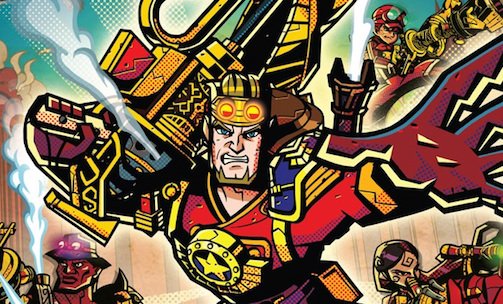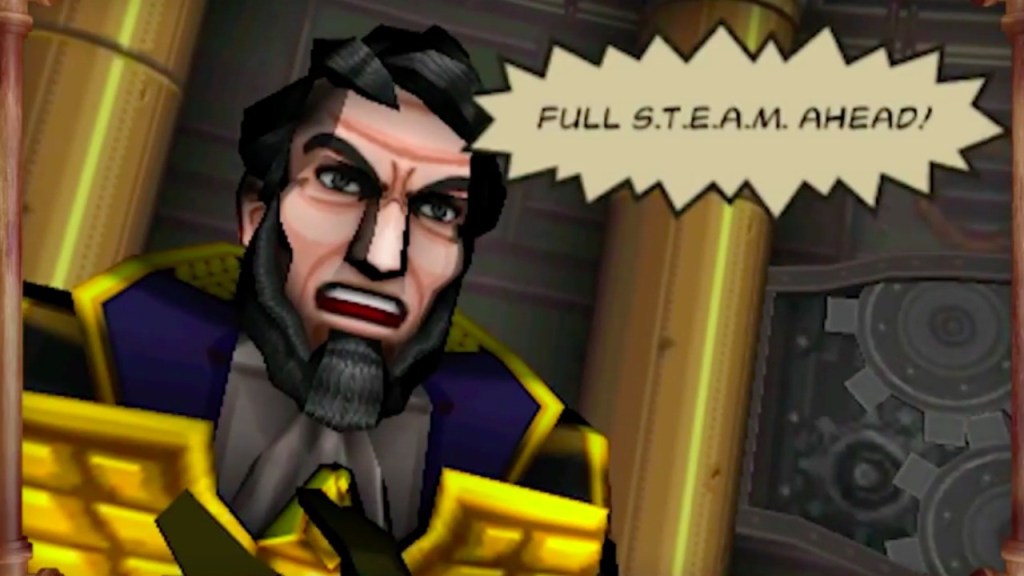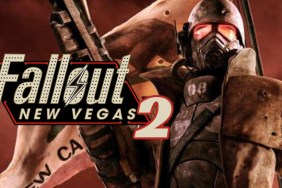More Steam than Gabe Newell could shake a stick at.
Illinois Representative Abraham Lincoln would go on to be one of the United States' greatest and most recognizable figures in its history, but even as much as we know about his tenure as president, the list of minute trivia from “Honest Abe” runs as long as his stovepipe hat. For example, Lincoln still clocks in to this day as the tallest President of the United States, standing about 6' 3.75”, just a few inches shorter than the average player in the National Basketball Association this season. President Lincoln was the first to establish a federal banking system in 1863, standardizing the nation's currency for the first time in its history. And though Honest Abe was proficient with an axe or hatchet, he could not bring himself to kill an animal, even for food. It has been noted, however, that President Lincoln allegedly did not carry that policy over to zombies.
In Code Name: S.T.E.A.M. another little known Lincoln fact pops up worth your hard-earned $5 bill – President Lincoln also established “Unit S.T.E.A.M.,” which stands for Strike Team Eliminating the Alien Menace, because even back then government didn't know what it was doing half the time. However, Abe showed foresight on this issue, as round about 1865 in jolly ol' England, well wouldn't you know it, aliens are attacking the earth! It's up to you, as Henry Fleming (yes, from The Red Badge of Courage, for those who remember the high school required reading) to assemble the S.T.E.A.M. Unit and its heroes and save the Earth!
Code Name: S.T.E.A.M., the brand-new IP from Nintendo and Intelligent Games, takes the risk of putting out a turn-based strategy game in a time when even the modern strategy and role-playing games shy away from that tactic (you see what I did there?) with more RPGs turning toward an action-based combat system. Instead, S.T.E.A.M. embraces the turn-based system which has found a resurgence in titles on the 3DS family of platforms with franchises like Fire Emblem and Bravely Default, putting players' characters in a uniquely steampunk alternative history where literary characters are quite real, and some are quite dangerous.
The steampunk ideas presented in Code Name: S.T.E.A.M.'s version of Victorian-era England, unsurprisingly, revolve around advancements in steam technology, and therefore advancements in Steam itself. Steam powers everything in Code Name: S.T.E.A.M., and I do mean everything, from the amount of energy your weaponry requires, to tanks that can be utilized on the field to even the amount of steps you can take, creating the distinctive strategy feel to the game. Full discretion: I am not the world's most avid strategy game player. I played a brief handful of Romance of the Three Kingdoms to feel kinda smart (thought I was awful) and that awful strategy game-playing ability has carried over to today, as I really haven't played too much of even Fire Emblem: Awakening. But my goodness, it's a turn-based strategy game. Really, how difficult could it be?
The answer: quite. Code Name: S.T.E.A.M. is not afraid to be good and challenging right from the get-go, especially for those who maybe aren't as familiar with the genre. But S.T.E.A.M. never outright forces the player outside the game looking inward. The game works fantastically in its earlier stages to not only familiarize players with the different abilities that will be needed to defeat the alien invasion, but the different tropes found within the genre as a whole, such as the concept of only being able to limit your total moves including all movement, as well as offensive and defensive actions, in one turn to the number of resources (in this case, Steam) a character maintains; this may come as second nature to strategy gamers, but to those who primarily play other genres, the concept may be completely foreign. The game does do a little bit of hand-holding along the way, but to be fair, it's primarily in their tutorial and prologue screens.
The hand-holding was actually more than welcome in the earlier stages, as the controls took a bit of getting used to. Movement was simple enough; by using the D-pad or Circle pad, your Great American Hero moves right along in accordance with his available Steam. Weaponry can be fired with the L shoulder button. But aiming that weaponry, on the other hand, required the use of a steampunk camera reticle attached to players' boiler pack that makes their Steam. It's clunky, but not only do players get used to its function, they learn to value its precision in aiming, in a game where truly every inch could mean the difference between clearing out an area with an explosive or simply making too much noise for aliens to find their next serving of Human Chow. Truly, once I got used to the camera reticle on the touchscreen, I didn't even use the C-nub at that point as I didn't have the same precision as on the touchscreen. Sometimes function wins out over flash.
As players are introduced to the literary greats that make up Unit S.T.E.A.M., each player by way of exposition offhandedly mentions their specialty, a noted characteristic that players will want to remember. Players learn that John Henry, for example, stayed true to his legend, with his mechanical arm transforming into his mighty hammer for the Hammer Blow, which can flatten surrounding areas for more precise attacks and less energy expenditure per move. Later in the game, Tiger Lily, the Indian princess from Neverland in J.M. Barrie's Peter Pan, steps forward in Unit S.T.E.A.M. As a healer, she can use techniques like her Healing Wind to cure hit points to herself as well as characters around her.
When written in the article as such, that seems rather innocuous. But the writing in this game is just bad. Almost laughably bad. Like, B-movie, Mystery Science Theater 3000 bad. With main characters frequently (and loudly) shouting quips such as “They're pretty alert!” and “So much for stealth!” over and over and over, it's not any wonder why Steam was so advanced in this day – the heroes needed it for cloud cover; moving in the silence of the shadows was not their for
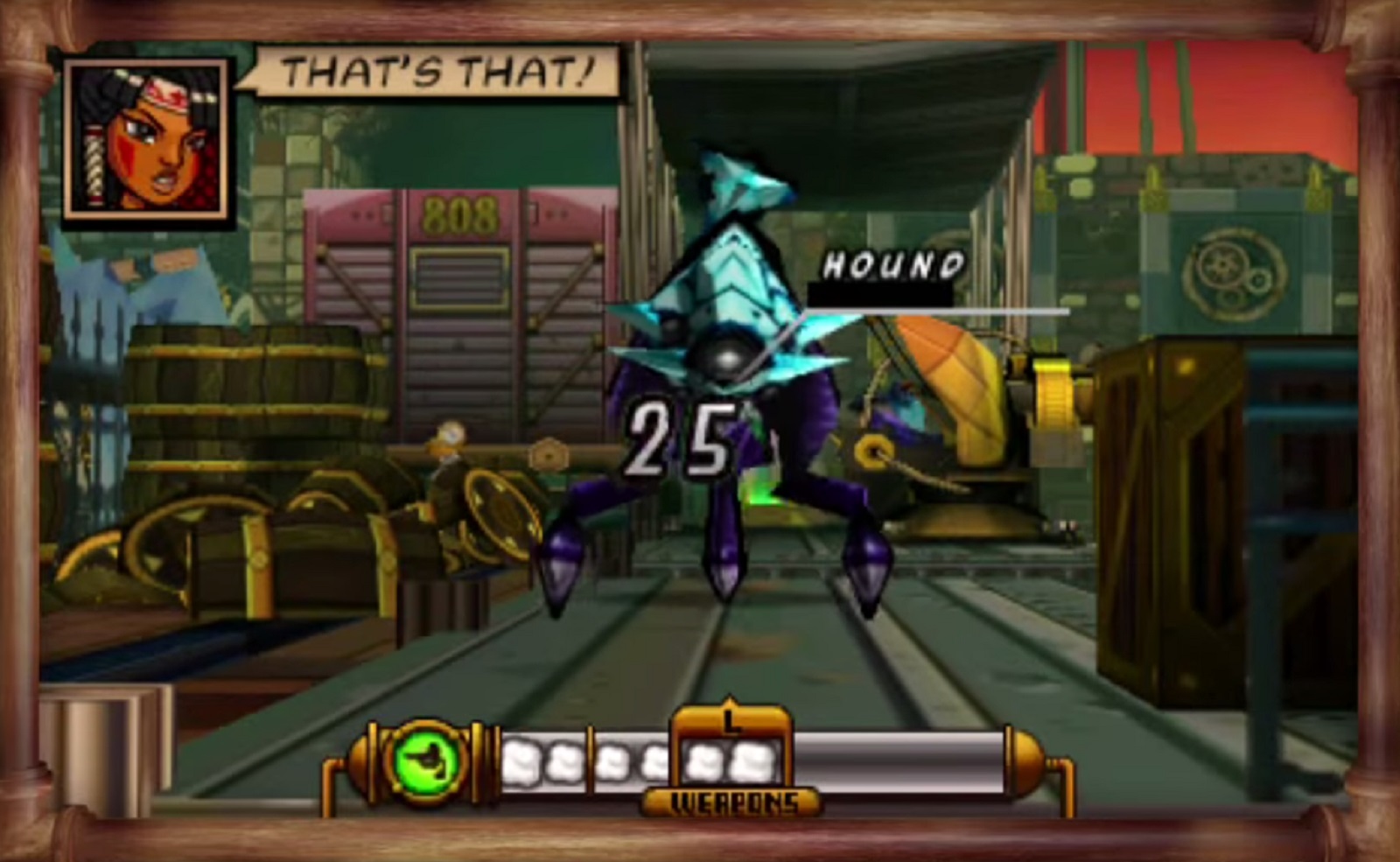
Despite the cheesy dialogue, the game still makes it clear which hero needs to be used at what time to advance. However, much to their credit, this is usually clear, but not always obvious, which makes puzzle and map progression so much more satisfying when resolved. And though the game will drop not-so-subtle hints from time to time, puzzles and maps are frequently able to be completed by any combination of characters, though this may spike the difficulty for that particular portion. The game plays pretty fairly, but makes no qualms over the fact that it will challenge players and it's not even sorry.
As maps become larger, the challenge factor increases as well, not only by more layout and more obstacles, but more challenges, and more baddies, Well, allegedly more baddies. I couldn't help but think that throughout my trial run of the game, I only felt as if I had seen maybe three or four species of alien at any given point in time. All the alien designs seemed to have been lifted from the illustrations of every H. P. Lovecraft novel ever, then forced to have a love baby with the Xenomorphs from the Alien trilogy. They're all appropriately ugly-looking, since as everyone knows only good guys can be beautiful, but for as far as that goes I found myself yelling out, “I thought I had killed all those little pissants already!” only for your gaze to turn around and meet yet another bug-like thing with razor sharp doodads in the arms that was slightly different from the others. They started as the classic “Thing 1” and “Thing 2” in my head canon, and eventually turned into Big Thing 1 and Big Thing 2. I'm aware I'm embellishing for effect this time around, but it doesn't change the fact that I would have cared for a bit more variety in things that would attempt to off me.
Code Name: S.T.E.A.M. enjoys its difficulty, but the levels and missions are in no way difficult to handle. Sections are broken up into manageable pieces that could take anywhere from five minutes to half-hours or more, depending on the type of map and intricacy of the map. It was nice actually having a game that understood the point of having a Nintendo 3DS or New 3DS portable system was – wait for it – its portability. Maps can be wrapped up in tidy little ways via victory or complete suckage, and though players might feel that their gamer instincts are compelling them to dive right in to that next mission, they have a very neat and tidy end to their gaming session with no muss or fuss about where they were or what they were doing in the prior map.
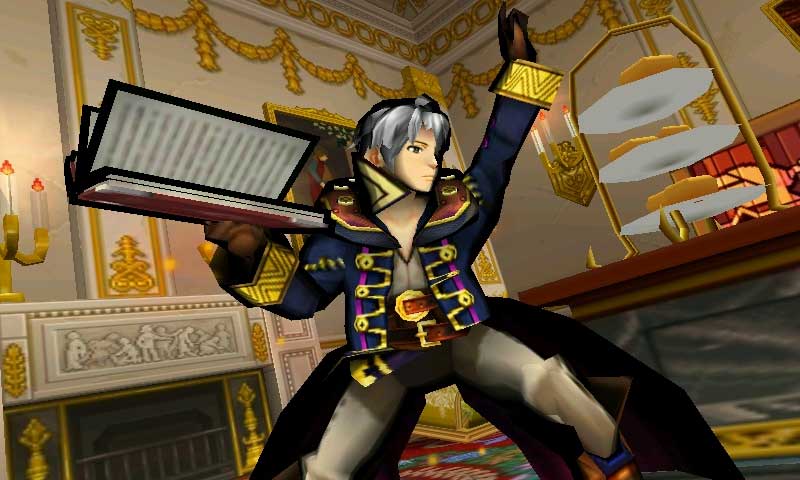
Intelligent Systems have found a spot for Nintendo's adorable, collectible, and currency-evaporatiug toyline amiibo in Code Name: S.T.E.A.M. By touching an amiibo belonging to Fire Emblem, players can draw in Marth, Ike, Robin or Lucina into part of their team, merging the characters into the current player team, with a small catch – unlike the heroes of Unit S.T.E.A.M., the Fire Emblem crew, die dead for a ducat when they fall in battle. No lives for Lucina, thank you; you'd be finding your way back to an Amiibo scan point before your Marth could start mauling again. (That is, providing you were able to manage to actually get a Marth amiibo, then that you decided to open the box, changing it from a mint-condition figurine to an actual toy meant for fun.)
Code Name: S.T.E.A.M. uniquely demonstrates how intriguing experiments within a genre can result in a fresh, excellent product – though being set in an alternate history steampunk version of London, the game honestly felt like it had a history of a western, almost “space-cowboy” feel to it, very reminiscent of a spinoff of the late, great Firefly. Unusual, almost foreign technology, designed to handle jobs and crafts long-since handled in our own reality, adds a flash of sci-fi pizzazz; blending this spark with the third-person shooter camera, and it creates something with a tone all of its own.
For the strategy gamer, Code Name: S.T.E.A.M. is a must-grab. But even for those who may not be too familiar or comfortable with strategy games or the genre as a whole, Code Name: S.T.E.A.M. still merits a healthy look. The title eases the player into the ideas that relate to both the game itself and the genre as a whole, and highlights necessary details through pointed, yet laughably-bad dialogue. Players will enjoy Code Name: S.T.E.A.M., and I personally guarantee this, or my name isn't ol' “Honest Abe” Lincoln. (Guarantee subject to availability, and void where prohibited, and also, I'm not Abe Lincoln, so that kind of nullifies that guarantee anyway. See what you learn in the fine print?)
Code provided by publisher. Available exclusively for Nintendo 3DS.
-
Steampunk atmosphere blends well with third-person shooter viewpoint.
-
Strategy gamers will eat it up.
-
Non-strategy gamers will find it easier to understand and get into than other current offerings.
-
Great comic book artistry (complete with added sound effects).
-
Cutscenes encapsulates exposition well, although after the fourth death you wish you could skip them.
-
I could have used more monster variety.
-
I can't continue with this report card. All out of Steam!
codename-steam
-
codename-steam #1
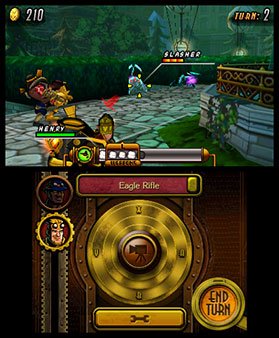
-
codename-steam #2
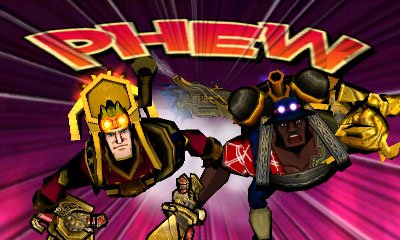
-
codename-steam #3
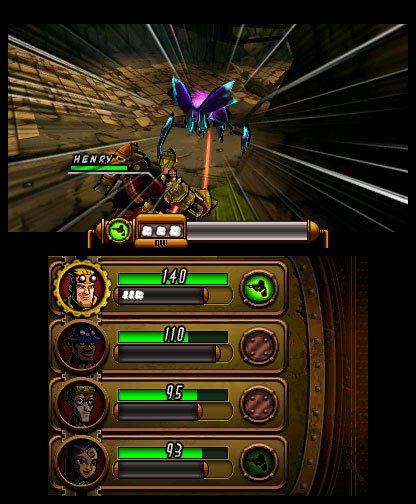
-
codename-steam #4
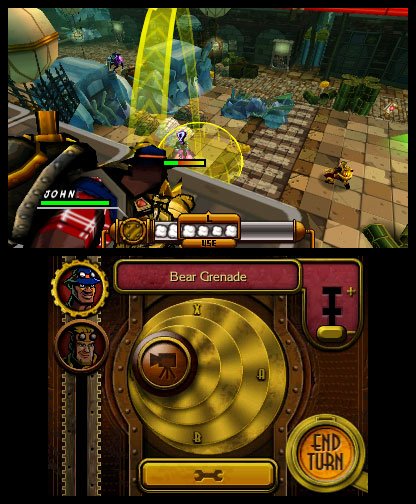
-
codename-steam #5
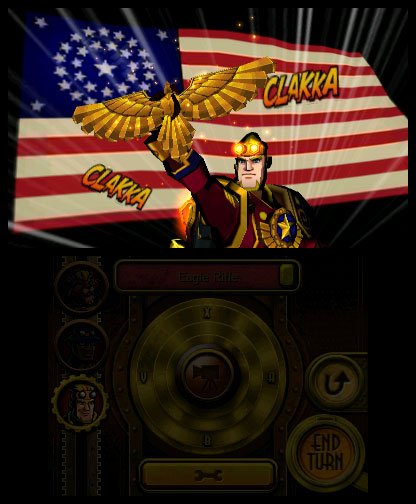
-
codename-steam #6
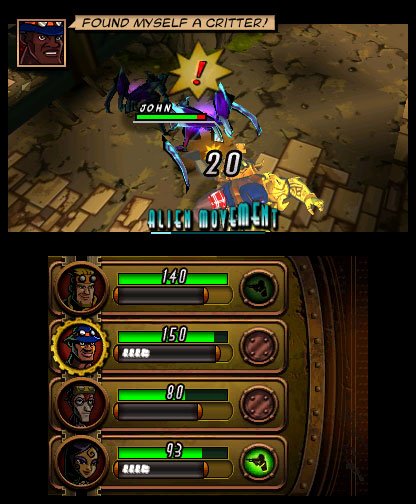
-
codename-steam #7
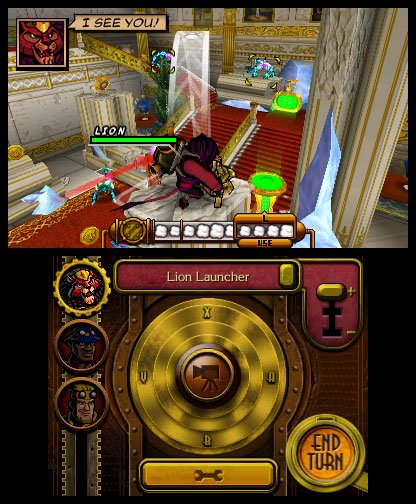
-
codename-steam #8
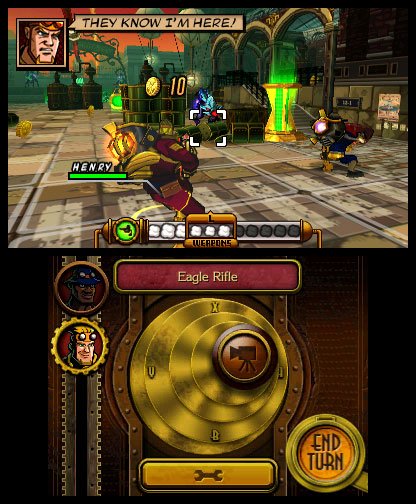
-
codename-steam #9
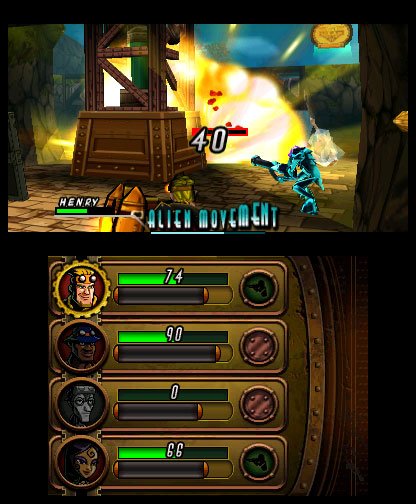
-
codename-steam #10
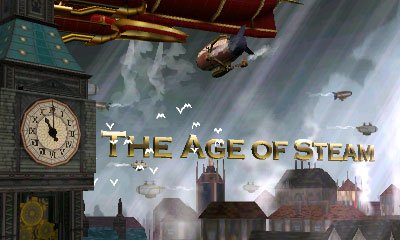
-
codename-steam #11
